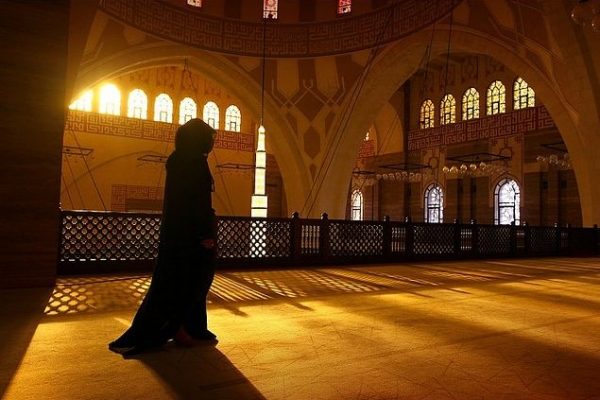A few months ago, a top-ranking primary school in Newham decided to ban the hijab for young children.
Children Wearing Hijab – Are They Being Indoctrinated and Sexualised?
A few months ago, a top-ranking primary school in Newham decided to ban the hijab for young children.
A few months ago, a top-ranking primary school in Newham decided to ban the hijab for young children. The ban was later reversed following quite a backlash. Discussions around the hijab followed, reviving the notion that the hijab is a form of indoctrination. The argument goes: girls are forced to don a cloth, sexualising them by treating them as a constant temptation to men, eroding their self-expression, all part of the Islamic milieu which champions a traditional nuclear family, which is itself a vestige of an older, patriarchal age.
Hijab, Children and Indoctrination
Let’s focus particularly on the argument that parents teaching their young daughters to wear hijab is a form of indoctrination. Is such a notion true?
No.
Even if it is true, it’s hypocritical to raise this point.
First, let’s consider if it can actually be regarded as a form of indoctrination. Indoctrination by definition is the process of teaching somebody to accept a set of beliefs uncritically. ‘Uncritically’ is important here. The idea of indoctrination is predicated upon the one being able to think critically, but being unable to do so because they have not been taught any opposing beliefs.
Can children think critically? Yes, to some extent. But can they reasonably be expected to philosophise and make informed, rational decisions about which doctrines they adopt? Surely not. Children do not have that capability. Voting is allowed for 18-year olds and above – children and even teenagers aren’t trusted with who to vote for, so why expect them to contemplate competing religious doctrines and social structures? If left to their own devices, children would rot their teeth from consuming too much sugar, stunt their cognitive capacity by ignoring their studies, and generally pursue fun at the expense of growth (not to imply that fun and growth are mutually exclusive).
Parents, therefore, teach their children what they think is best for them. This, of course, applies to food and lifestyle, but it absolutely applies to religion as well. An atheist would teach their child that religion is absurd. A Christian would teach their child the Lord’s Prayer. A Muslim would teach their children about the 5 pillars of Islam, and about hijab, maybe even encouraging their young to don it in preparation for adulthood.
So, if one regards children wearing the hijab as indoctrination, then so too are atheists indoctrinating their children into non-belief, so too are Christians indoctrinating their children into attending Church. Parenting, if viewed skeptically, is indoctrination. Every parent has their own beliefs and ideas, which out of love and compassion, they want their child to adopt. So they teach them. Even if a parent teaches their child that homosexuality is acceptable, this too can be regarded in a similar light, since this belief is based upon a particular worldview.
Does that mean that parents are oppressive, and force ideologies onto impressionable children? Of course not. This is but a part of parenting, but it seems that the language of indoctrination is reserved specifically for Islam; perhaps a manifestation of the self-righteous scoff that many express towards Islam.
In this regard, hijab is no greater an indoctrination than any other upbringing from people of other belief systems. In any case, the alternative is absurd. Are children capable of employing a sophisticated analysis of conflicting world views? Surely not.
Hijab and Sexualisation
So now we’ve understood that the hijab, or a religious upbringing more broadly, is not a project of indoctrination, what of the claim that the hijab sexualises children?
Before we begin, two caveats should be noted. Firstly, scholars state that hijab is not binding upon children. Secondly, hijab is for both men and women, but here, I specifically use hijab as referring to the headscarf worn by some Muslim women.
The argument used here is that the hijab sexualises children by making them wear a garment that presents them as a temptation for men at such a young age. Firstly, this isn’t the purpose of the hijab. The ratio legis (the reason behind) hijab is to please God. The wisdom behind it may well be that of modesty. Indeed hijab is widely seen to be a tool for maintaining modesty in the Muslim community. Scholars of Usul-al-Fiqh (Islamic Jurisprudence) make a subtle but important difference between the reason behind an action, and the wisdom behind it. Very often, the wisdom behind an action is confused for the reason for its prescription.
A common example of this is intermittent fasting; the Prophet (peace be upon him) would fast on Mondays and Thursdays. Recent studies show this to be a very effective way of reducing the risks of cancer, and indeed of maintaining a healthy state. Out of zealousness, it is common to hear some Muslims proclaim that this is the reason why the Prophet would fast intermittently. Certainly, the health benefits are part of the wisdom behind fasting, but not the reason behind it. The reason why the Prophet would fast on these days is that these are the days that good deeds are taken to Allah, and he would prefer to be fasting during this time (narrated in Tirmidhi). This is the reason behind the fasting, which is distinct to the wisdom behind it.
Applying this to the topic at hand, the reason behind the hijab is to please God, whereas the wisdom behind it could well be modesty. As such, the hijab is primarily an act of obedience to God, and so its use, if presented in this fashion, does not principally sexualise those who wear it. I would concede that the widespread discourse around hijab is pivoted around modesty, so the source of this contention is understandable.
In any case, to regard the hijab as something that sexualises children is hypocritical, when contemporary society is filled with other references to sexuality. Not too long ago, there were denunciations of telling boys not to wear tiaras. Telling boys not to wear tiaras was seen as undermining the notion of gender fluidity. Moreover, children are exposed to concepts of LGBT from a variety of sources in society. Some of these sources are a part of formal education which has the noble goal of reducing bullying. Despite this, children are exposed to talk of sex and sexuality at a young age, with the freedom solicited by social media being a major contributory factor to this. Whether for better or for worse, society is a sexualised space, and children have been affected by this. In the midst of such a setting, to narrow out hijab as a form of sexualisation is hypocritical.
Summary
Is the hijab indoctrination? If it is, then practically every other type of upbringing is also indoctrination – but that’s absurd, so the hijab is but the attempts of a Muslim parent teaching their child what they think is best. Does the hijab sexualise children? No – the reason (as opposed to the wisdom) behind hijab is to please God, but still, hijab is widely perceived as a tool of modesty. Even in this regard, regarding hijab as sexualising is hypocritical when society itself is a hyper-sexualised space.
The Muslim community has some way to go in articulating hijab. This needs to be both an internal and an external project. Both are in need of fixing. Internally, we are obsessed with the hijab down to the finest fiqh point, with some regarding it as the definitive indicator of piety. Understanding hijab as a manifestation of the vivid and wide-ranging morals is hard to come by.
Externally, Islam needs to be projected as something holistic, with wholesome ideals and values; too often, our Islamic propagation is a series of refutations of the myriad accusations hurled against Islam. This is important work, but we need to spend more time saying what Islam is, rather than entirely dedicating ourselves to what it isn’t. There is much work to be done.





